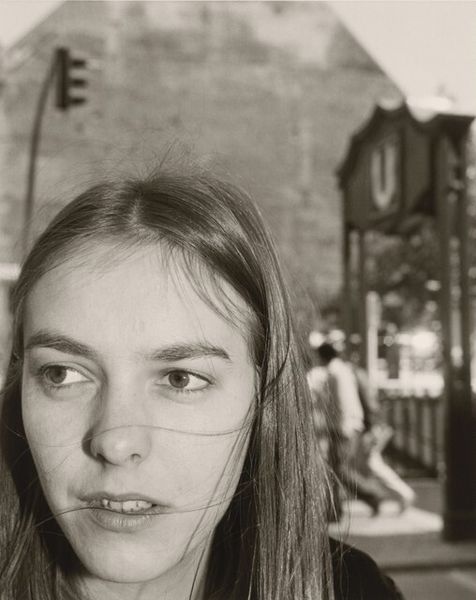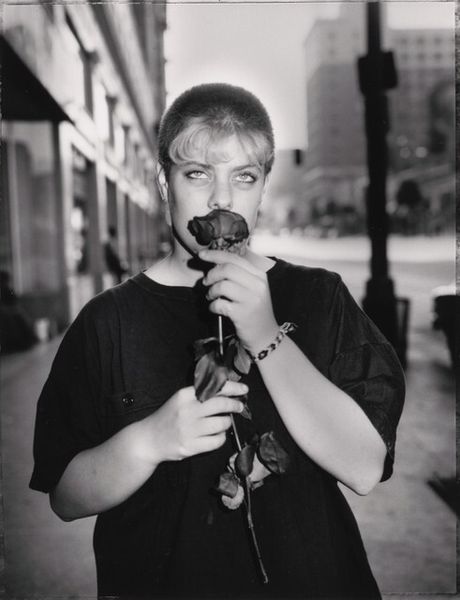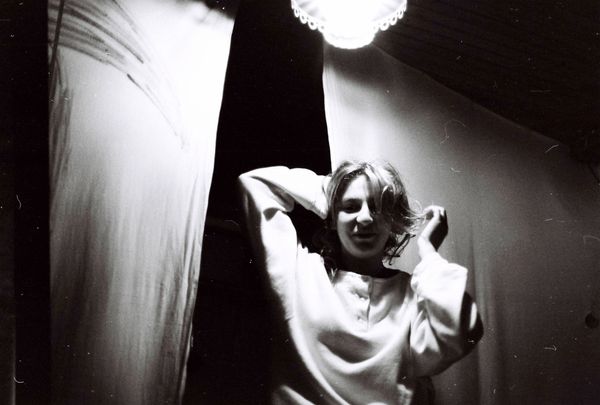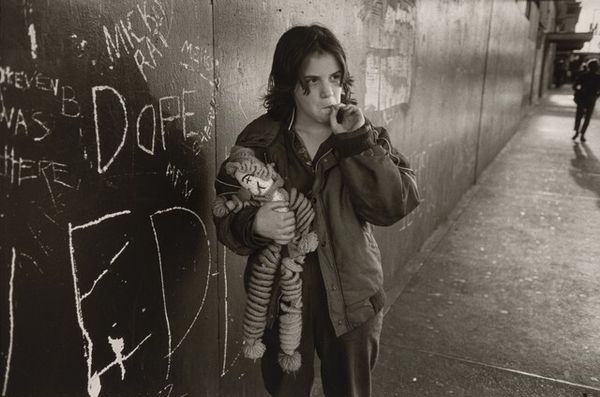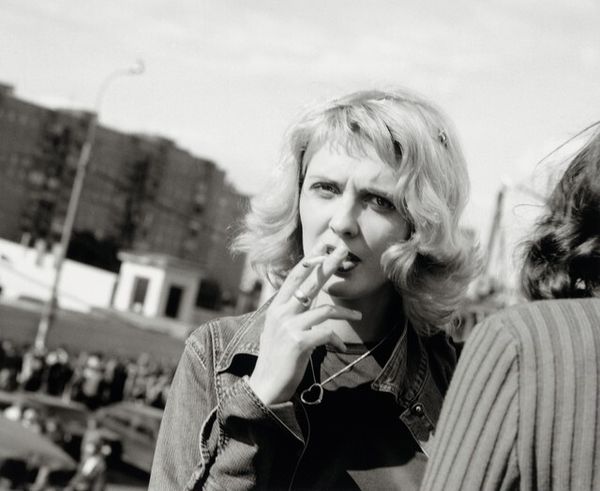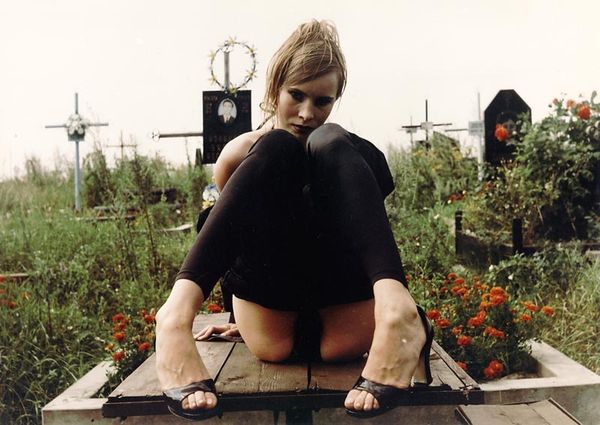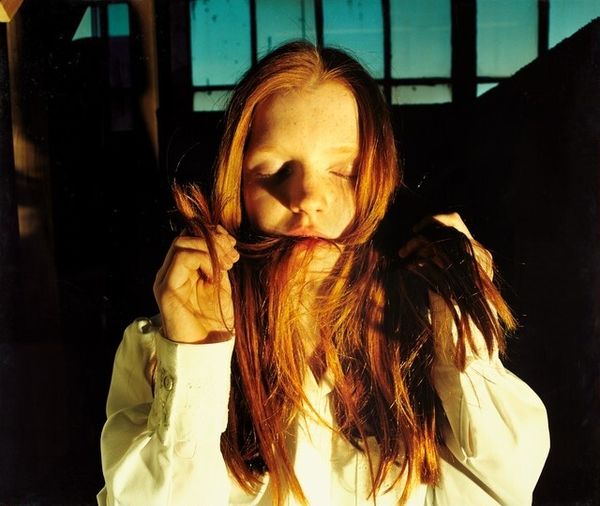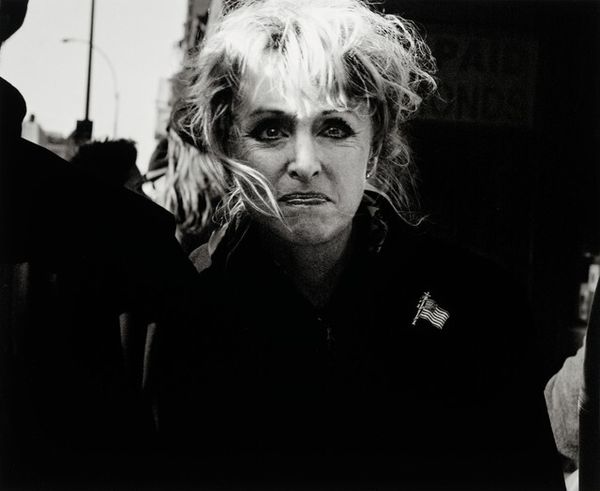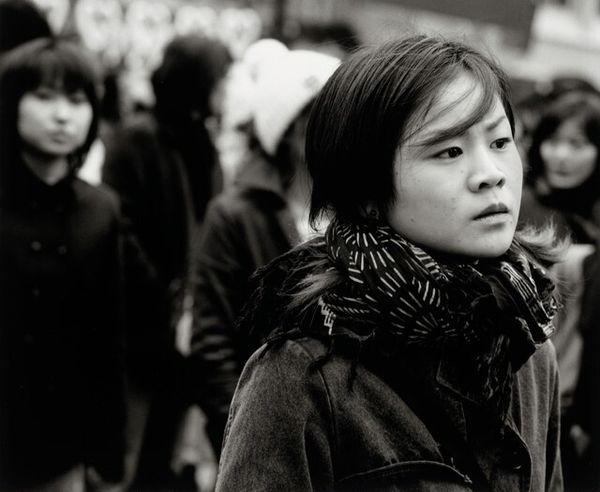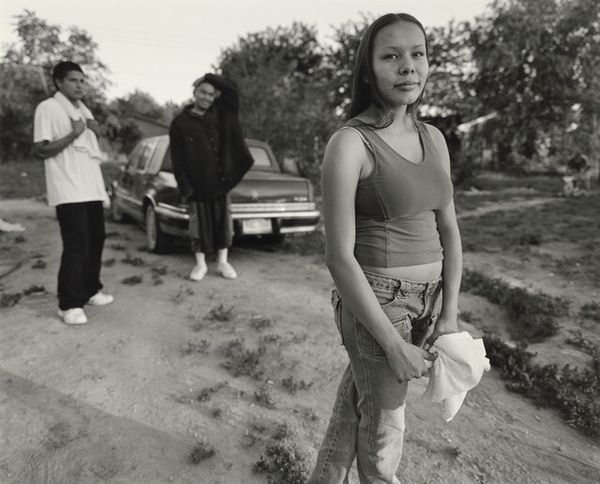
Dimensions: sheet: 35.4 × 27.6 cm (13 15/16 × 10 7/8 in.) image: 32.3 × 21.5 cm (12 11/16 × 8 7/16 in.)
Copyright: National Gallery of Art: CC0 1.0
Curator: Jim Goldberg’s gelatin silver print, titled “Kato, Hollywood Boulevard,” likely taken sometime between 1990 and 1994, immediately strikes one as melancholic. There's a pervasive sense of urban solitude conveyed in the stark black and white. Editor: It’s a striking piece, indeed. I’m drawn to consider the hands-on method here: a tangible gelatin silver print is so directly created, demanding physical labor, chemical interaction, and a darkroom practice entirely absent from our contemporary digital photography. It makes us wonder about the labor inherent to street photography, wandering a location like Hollywood Boulevard until Goldberg discovers an engaging subject, such as this individual, Kato. Curator: I find the direct gaze compelling; the subject's eyes lock onto ours, challenging us, disrupting the familiar dynamic of street photography where the subject is often unaware, a voyeuristic capture. Editor: Exactly, it makes me think of clothing as an additional material. It's not just a backdrop but an integrated part of the storytelling. The painted shirt introduces an element of self-expression and possible socio-economic status, marking Kato's labor outside a commercial economy. Who is Crazy-J? Are the spray-painted graphics homemade? It suggests making and wearing is intertwined here with daily existence. Curator: Note the contrast between the figure and the blurred background, sharply separated planes within the same visual field. The geometric rigidity of the buildings receding into the background contrasts with the softened lines of the human face and self-created graphic on Kato's chest. There is an intentional dissonance created. The subject is grounded within the locale, yet subtly alienated, too. Editor: Interesting to observe from this vantage, given what we can see in how street scenes and portraits interact materially: Consider Hollywood Boulevard as a locale of mass-produced spectacle but also the street's history as a site of protest. The layered narrative adds depth to the single photographic frame. What does it mean for Goldberg as a photographic artist to choose Hollywood Boulevard for portraiture? Curator: The composition itself suggests a visual essay, a careful deliberation of line, texture, and form which culminates in far more than the documentary record of a fleeting moment, a study in tonal control. Editor: Yes, and I see beyond those formal elements a connection to daily lives expressed, particularly of someone maybe outside normative forms of capitalistic production. The image feels charged, as Goldberg not only pictures Kato, but offers the possibility of engaging with questions of work and personal style on Hollywood Boulevard.
Comments
No comments
Be the first to comment and join the conversation on the ultimate creative platform.
